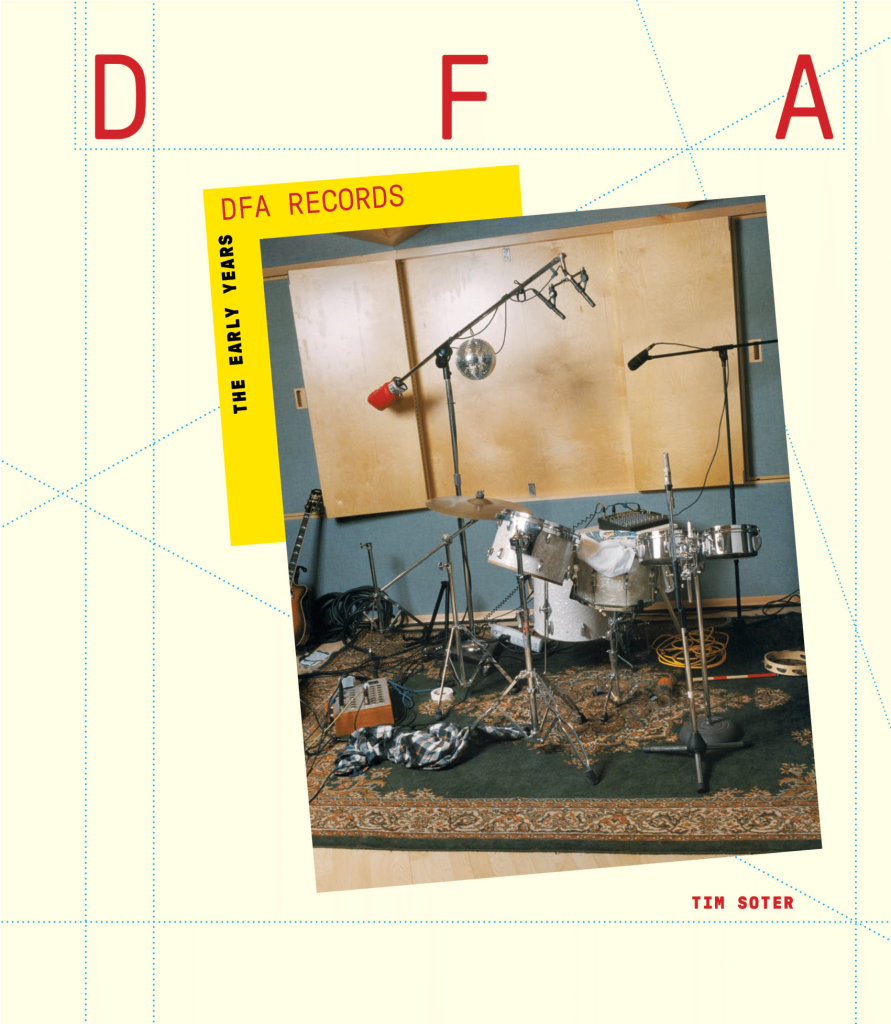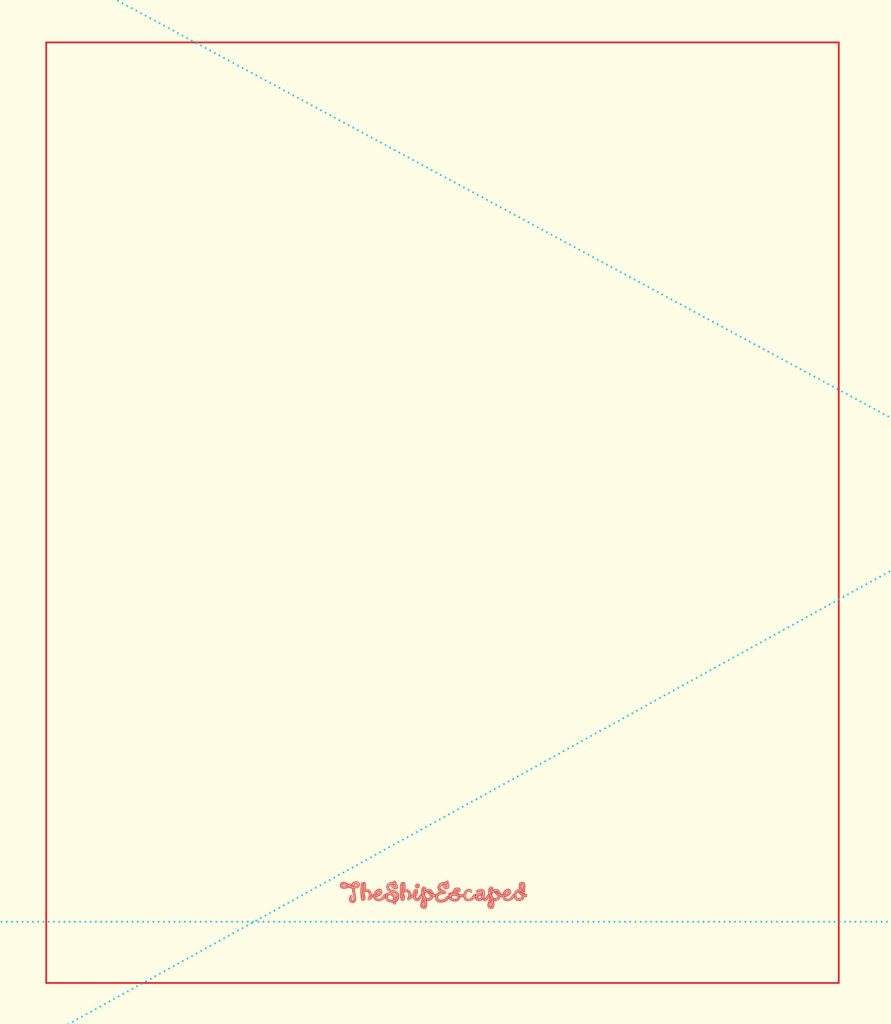Upon completion of his latest photo book, DFA Records: The Early Years, Tim Soter looked on Amazon to see what his competition was. He was intrigued to know who would still be making photo-books of musicians in 2024. The results were unsettling, but fitting of the times. Soter noted a Travis Scott fan book sold on Amazon that appeared to be written entirely by AI, with suspiciously sourced photos that had no clear direction or intention at all. The book is certainly far and away from the precisely curated fanzines and coffee table books Soter had in mind when compiling DFA Records: The Early Years, but in a way, it does seem to accurately reflect both the time we’re in and the times we’re headed towards.
“It’s difficult to see what the landscape of now will look like in twenty years.” Tim Soter said, “if you were to make [DFA Records: The Early Years] 20 years from now, who would be the focus, and what might that book look like?”
Based on photos he took as DFA Records’ go-to press photographer, DFA Records: The Early Years is a goldmine of references and lookbacks for superfans of the New York label. Founded in 2001 by James Murphy, Tim Goldsworthy, and Jonathan Galkin, the label went on to be one of the defining indie-electronica labels of the era, pushing artists like The Rapture, The Juan MacLean, and of course, Murphy’s LCD Soundsystem.
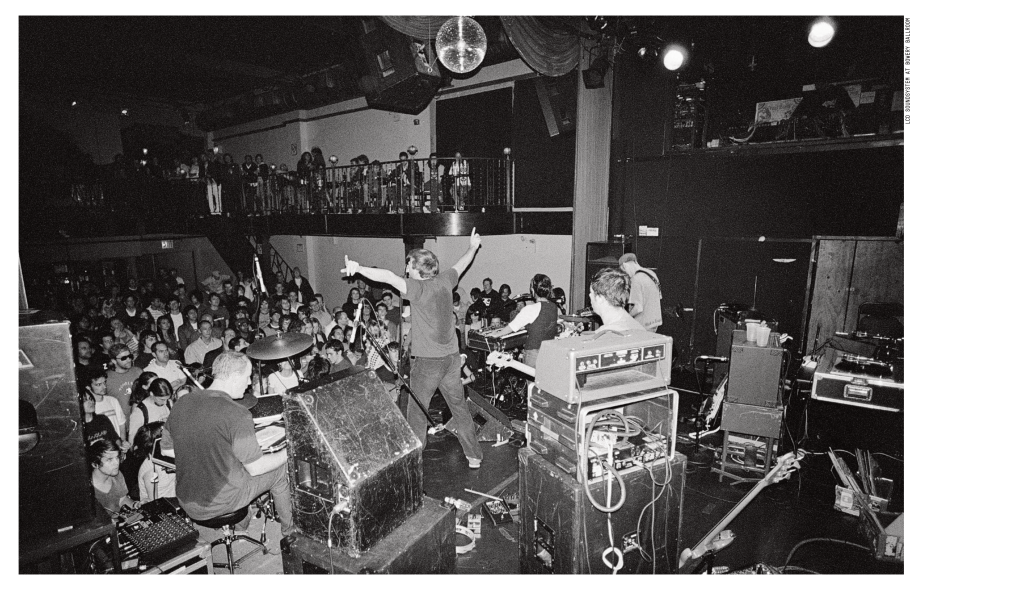
Soter re-discovered his massive repository of DFA photos when he was contacted about the documentary adaptation of Meet Me in the Bathroom, Lizzy Goodman’s defining oral history of New York City’s indie aughts. He obviously recalled the time he spent with the label, but it wasn’t until he dug into his archive that he realized he had enough material to justify a collection.
As a child of the record store generation, information on Soter’s favorite bands were scarce and anything offering a glimpse into the lives of the music he loved was precious. In the book’s introduction, Soter details the story of finding New Order + Joy Division: Pleasures and Wayward Distractions and having an entire world of mystery blown open for him.
“In that era, you only know so much and things seem way beyond you. It all seemed tinged with magic,” Soter said. “With a DFA book, the thing I wanted to create was a thing for people that were there, or people who weren’t there that are just catching on now.”
Soter had been working as a photo editor at the now-defunct FHM magazine. An apathetic music editor would allow Soter to raid the promotional submissions the magazine received, which bore the first DFA releases, including “Losing My Edge,” LCD Soundsystem’s iconic debut single.
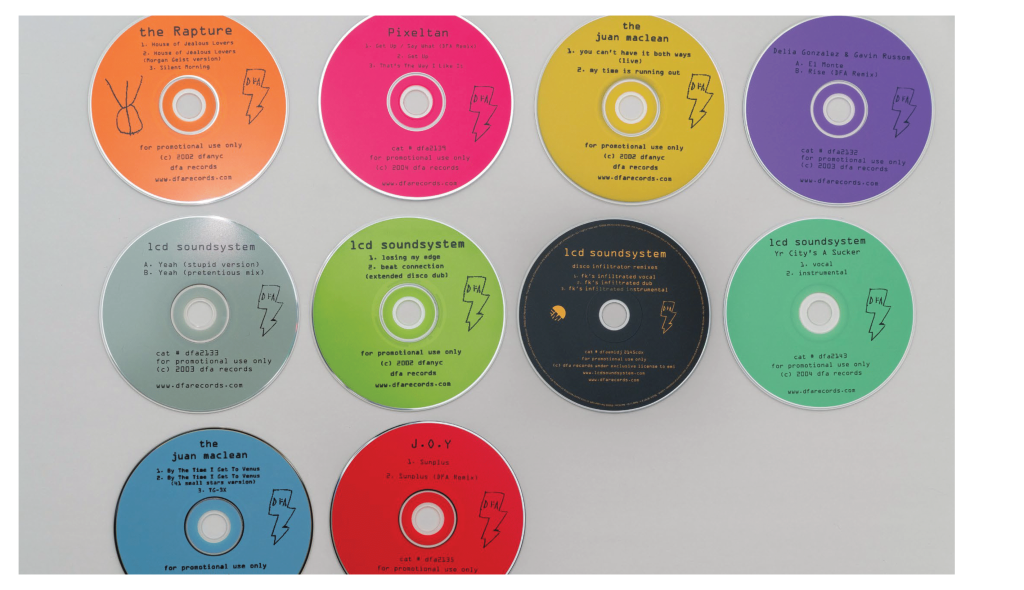
He approached Jonathan Galkin, the then-label manager of DFA “with a swagger that you can only have in your 20’s. “I want to take the press shot of LCD,” reads an email Soter sent Galkin in late 2004, “I’m methodical and would like to shoot ‘the’ press photo for every band on the label.”
“As a photographer, I am kind of obsessive. I want to make sure I get everything in when I’m documenting something,” Soter says, “when I started taking the portraits and I had time to kill, I’d say ‘Here’s a bunch of instruments, I should document this.’”
Beyond standard press shots, the book offers photos of DFA’s offices and studios, as well as some of the only available shots of its infamous parties. The well-roundedness fuels both clarity and allure towards the era. One office photo features a poster of Downtown 81, the Basquiat-centered film shot in the early 80’s that highlighted the avant-garde post-punk/disco scene in New York. Another photo, seen on the cover, shows a barebones drum kit; in a different era, the image could have spurred weeks of debate over which tracks this was used in and which microphones are featured in the photo.
Soter’s comprehensive style benefits the book’s value as a resource and reference for DFA superfans; images of a lethargic James Murphy in a Future Days shirt, a bare drum kit rigged with mics, and Tim Goldsworthy seated in front of tens of thousands of dollars of synthesizers allow for a more robust interpretation of the label; not as the bohemian partiers many look back on them as, but as a group of (incredibly well resourced) individuals interested in emulating a specific era’s energy and cultural product.
Notably missing are some of DFA’s most soliloquized moments. Largely due to the timeframe Soter actively worked with the label, there is little of LCD Soundsystem’s fame throughout Sound of Silver and This is Happening. Although most LCD fans would’ve been content with an umpteenth angle of their Madison Square Garden show, or material documenting the downward spiral of the Galkin-Goldsworthy-Murphy relationship, the book’s reliance on material so tightly bound within the confines of timespan and location adds rare nuance and insight to a story that has already been told through countless nostalgia-bait articles and reminiscent video essays.
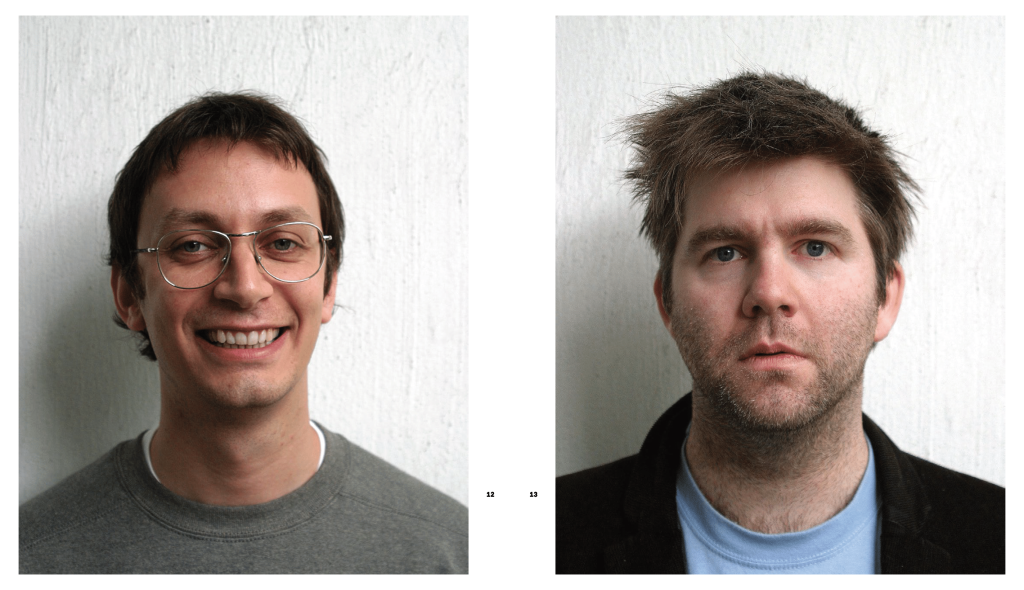
Notably, no conversation with Murphy, Galkin, or Goldsworthy is included. An interview with Galkin was meant to close out the book, but conversations petered out. Instead, an interview with the three active members of The Rapture is found in the last pages of the book.
“I [could’ve got] in touch with them, I’m just not sure what that would’ve afforded me,” said Soter. “The good thing about him not getting back to me was then this story wouldn’t have been told by anyone that started this label. That way, it wouldn’t just have one of those three as the perspective in the book, which I appreciated.”
The lack of an internal perspective contributes to the fan feeling that Soter had in mind. It avoids the hollowness found in promotional material and nostalgia-bait. It doesn’t feel like promotional material that cherrypicks highlights and discards the mundane, nor does it feel like nostalgia-bait curated to cash in on longing for begone glory days. Instead, it’s a tribute to the era of punk zines and photobooks Soter grew up on. It’s not a coincidence it’s the same era that bore DFA Records.
“You can see how exciting it was,” Tim Soter said, “and that’s probably the biggest allure.”
“DFA Records: The Early Years” is available now via The Ship Escaped
